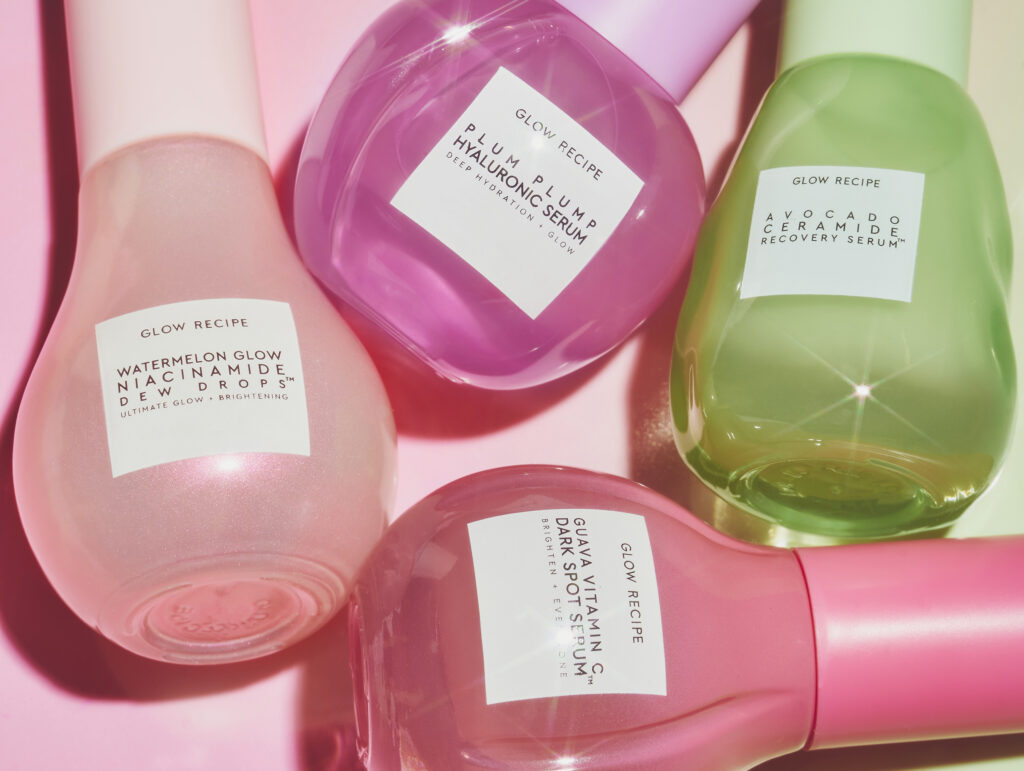Remember when extensive skin-care routines were all the buzz? The more the merrier was certainly the theme when it came to skin-care products on our faces. But recently, in re-examination, we’ve all realized that extreme excess — for both the environment and our faces — isn’t really necessary.
Paring down your morning and nightly routine to a few of your favorite basics can actually help your skin, letting it not be so overwhelmed with a plethora of products. And when looking at ritual under a microscope, you might even question whether you could just swap your face serum for moisturizer or vice versa. Below, we break down what a serum is, what makes a moisturizer, and what makes both worth having.

What’s a moisturizer?
A moisturizer might be an easy step for you to consider skipping, particularly if you currently have combination or oily skin — but don’t. Moisturizers are a must, as they “help seal moisture and nourishment into the skin, while creating a barrier to prevent moisture loss,” says board-certified dermatologist Dr. Geeta Yadav. (However, the weight and ingredients might vary based on your preference and need.) They typically have emollient properties, commonly coming from ingredients like shea, cocoa, and other plant-based butters and oils.
What exactly is a serum?
Face serums are thinner formulas with a high concentration of active ingredients that target a specific concern. “They’re designed to absorb quickly and deeply into the skin to deliver targeted benefits, such as brightening, smoothing, or hydrating,” says Dr. Yadav. Think of a serum as your workhorse treatment, specifically addressing a particular issue or purpose to help aid your skin on its journey. It has more variety — while the primary purpose of moisturizer is to, well, moisturize, serums can tackle dark spots (like our Guava Vitamin C Dark Spot Serum), redness (like Avocado Ceramide Recovery Serum), and dehydration (like Plum Plump Hyaluronic Serum). They can (and should!) be paired to address multiple concerns, too, here’s a guide.

Do you need both a serum and a moisturizer?
Absolutely — in fact, a serum and moisturizer go hand-in-hand. Serums tend to have specific functions, which can include hydration, but you shouldn’t expect profound moisture from a serum. Meanwhile, a moisturizer will seal in those functions with emollient ingredients, allowing them to work more effectively and efficiently.
“While they can oppose each other depending on the ingredients in each – for example, you shouldn’t use a resurfacing serum with AHAs in tandem with a moisturizer that contains retinoids to avoid irritation — they otherwise are usually quite complementary,” says Dr. Yadav.
A perfect example of a serum and moisturizer working in tandem is our new Plum Plump Hyaluronic Cream with our best-selling daily serum, Plum Plump Hyaluronic Serum — together, the two ultra-hydrating products create plump, bouncy skin. The multi-weight hyaluronic acids in both formulas have a synergistic effect when paired together, and hyaluronic’s juicy benefits work best when paired with an emollient over it, like found in the Cream. Working in tandem with the hyaluronic acids, both the serum and cream feature three blends of plums – specifically Kakadu, Illawara, and Burdekin – to leave skin feeling dewy and hydrated.
The cream also features the buzzy and potent polyglutamic acid, a peptide known for its long-lasting hydration, which boosts the efficacy of the hyaluronic acid in both formulas and locks in moisture for all-day hydration. And for those who’ve been dealing with combination skin lately, ice willowherb extract will help to balance skin and support a healthy skin barrier.
Ultimately, what makes the serum and cream different is that the Plum Plump Hyaluronic Serum’s lightweight texture provides deep plumping hydration to target dehydration concerns, while the Plum Plump Hyaluronic Cream seals in moisture for long-lasting hydration without feeling heavy or oily. Due to the synergistic relationship between polyglutamic and hyaluronic acid, layering the two products allows both to work even better together.

How to apply serum and moisturizer in your skin-care routine
A good rule of thumb for layering skincare products is to apply them in order of lightest to heaviest texture, says Dr. Yadav. So you’d apply a serum after your toner (if you’re using one) and before your moisturizer.
And if you’re using a gentle, hydrating serum, like our beloved Plum Plump Hyaluronic Serum, you can use it twice a day, morning and night. “Because hyaluronic acid is not an irritating ingredient, it can be used daily,” says Dr. Yadav. “Hyaluronic acid is a wonderful ingredient to use via a serum as it’s a humectant, which means it draws moisture into the skin. Applying a moisturizer on top will help seal in those benefits while adding nourishment, ensuring that moisture doesn’t escape.”
Whether you’re paring down your routine or looking to start one, the one-two punch of using our Plum Plump Hyaluronic Serum with our brand new Plum Plump Hyaluronic Cream is a no-brainer. Together, they work harmoniously to deliver juicy, plump hydration, giving your skin the healthy, balancing moisture it craves.
Read more about moisturizers and serums:
- The Best Moisturizer for You Right Now
- Face Serum: What It Is & How to Choose One
- How to Moisturize Oily Skin
SHOP THE LOOK
RELATED














No comments found